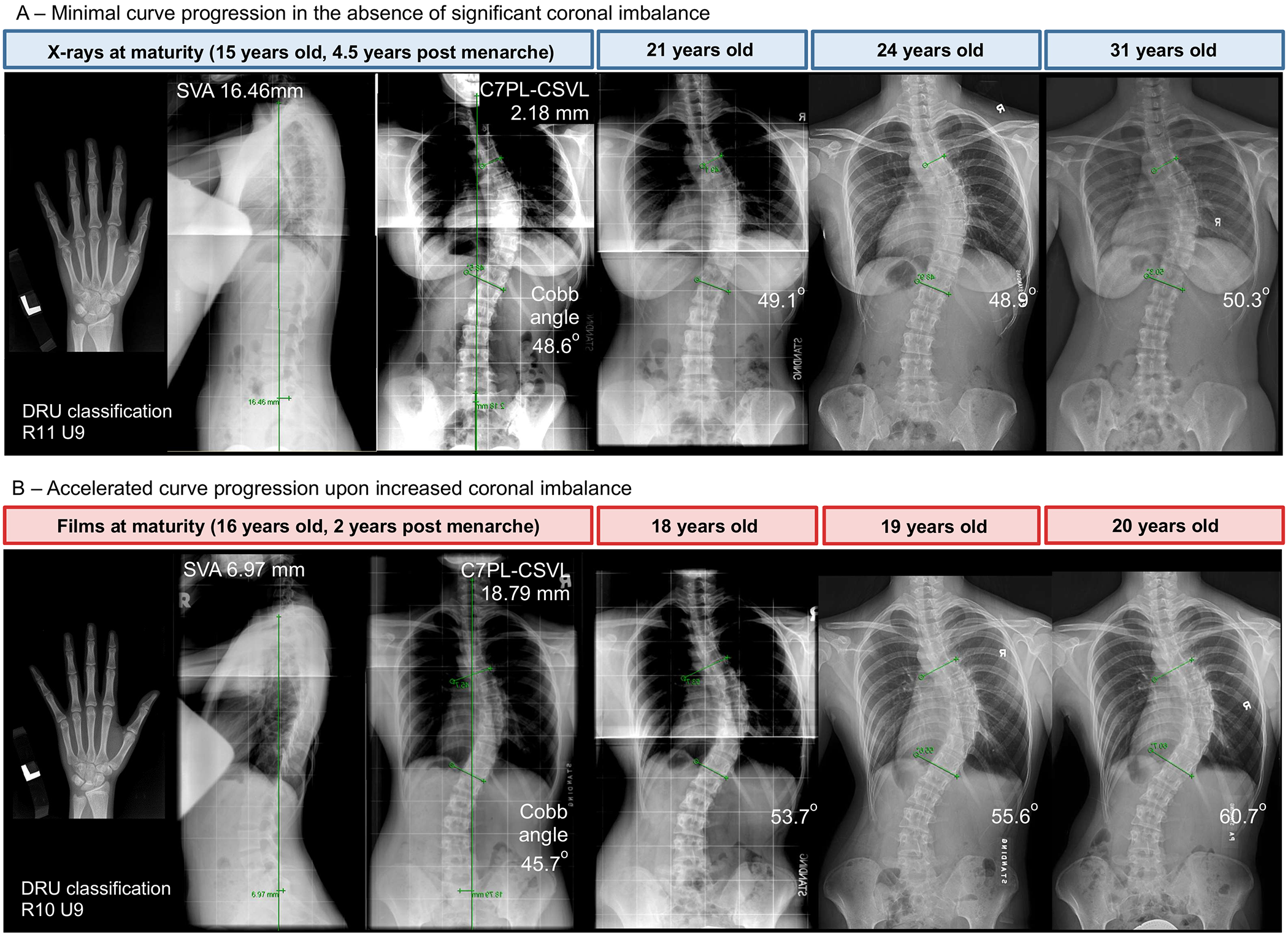Dr. Matt Schmitz, JBJS Deputy Editor for Social Media, discusses a new study evaluating curve progression after skeletal maturity in patients with adolescent idiopathic scoliosis (AIS) and a major curve Cobb angle of 40° to 50°.
In adolescent idiopathic scoliosis (AIS), thoracic curves of >50° have been shown to progress, and thus many spine surgeons recommend surgical fusion to prevent that progression. However, debate continues as far as AIS curves of 40° to 50° at skeletal maturity—will they continue to progress?
In the February 15, 2023 issue of JBJS, Yu et al. present the results of a retrospective study evaluating patients with AIS curves of 40° to 50°. The researchers sought to better understand the prevalence and rate of progression and to identify factors associated with curve progression into early adulthood.
Study Highlights
- 73 skeletally mature patients with AIS were enrolled in the study. Progression of the curve was defined as an increase of ≥5° over a minimum of 5 years.
- 28 patients (38.4%) showed no progression (NP) over a mean of 11.3 ± 5.7 years from maturity.
- 45 patients (61.6%) demonstrated progression, at a mean of 1.47° ± 1.22° per year:
- 32 of these patients had “standard progression” (SP) of <2° per year over 14.9 ± 7.9 years;
- 13 patients had “fast progression” (FP) of ≥2° per year over 5.0 ± 2.7 years and underwent spinal fusion earlier.
- Age at presentation, presenting Cobb angle, and age at menarche did not differ among the 3 groups.
- Thoracic apical vertebral wedging (concave/convex vertebral height × 100) was more apparent in those with progression (84.1 ± 7.5) vs. those with no progression (88.6 ± 3.1) (p = 0.003).
- Coronal imbalance was significantly greater in the FP cohort (16.0 ± 11.0 mm) than in the SP + NP group (8.7 ± 7.7 mm) (p = 0.007).
- The rate of those treated surgically differed between the three groups (p < 0.001):
- 4/28 (14.3%) in the NP cohort;
- 11/32 (34.4%) in the SP cohort;
- 13/13 (100%) in the FP cohort.
This is the first larger study to look at the progression of AIS curves between 40° and 50° after skeletal maturity. The authors identified thoracic apical vertebral wedging and increased coronal imbalance as radiographic parameters associated with curve progression.
Although the cohort is from a single tertiary center, the findings suggest that curves in the evaluated range seem to behave more like curves of >50° in that they continue to progress after skeletal maturity. The authors concluded that the average rate of progression was slow and that their practice of yearly observation was a reasonable approach to management. With validation in larger cohorts, they add, “apical wedging and coronal imbalance may identity patients suited for closer monitoring and early spinal fusion.”
Knowing that a majority of curves of >50° progress after skeletal maturity, and those <30° rarely do, the data from this study help to fill in a knowledge gap regarding curves between 40° and 50°.
Access the full study at JBJS.org.
JBJS Deputy Editor for Social Media
Related reading on OrthoBuzz:
Expanding Our Understanding of Pain Catastrophizing and Its Impact on Outcomes
What’s New in Spine Surgery 2022
Image updated Feb. 15, 2023.




